An enthusiastic young collector had a gut feeling about a painting he’d just purchased. He reasoned that the painting could fetch a higher price. When he brought the painting in for appraisal, however, he was surprised by the price. When the collector learned the portrait’s value, he was taken aback.
Special Interview
On January 1, 2013, the cameras began filming. David Weiss, a well-known appraiser, was about to begin the most important interview of his entire career. When it came to the arts, he was an expert, which is why a lot of people come to the show to have their items examined by him.
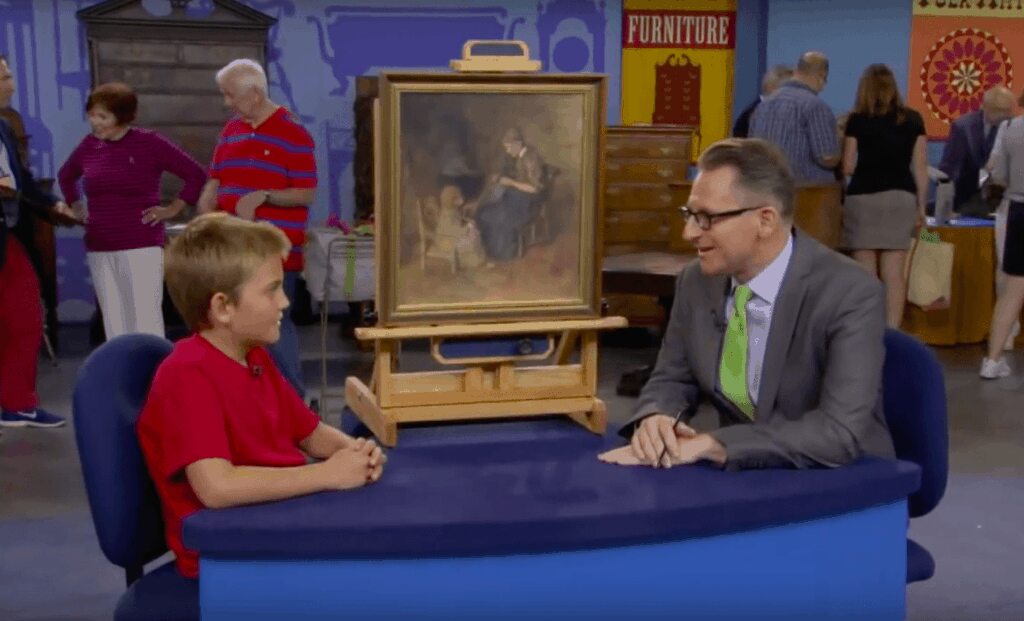
Special Interview
A Knowledgeable Person
In the American edition of Antiques Roadshow, he was the most knowledgeable person about drawings and paintings, and he had a variety of auction house experiences. The appraiser sat across from the boy who owned the painting. Inside the show, he was relatively calm. The expert began his business after a few preparations.

A Knowledgeable Person
Antique Trader
Even at a young age, the boy in the Antique Roadshow guest was an eager antique trader. He had no idea, however, how valuable the painting he had discovered was. The portrait’s owner believed he was bringing a one-of-a-kind piece of art to the show. He, on the other hand, did not expect the canvas to fetch a high price.
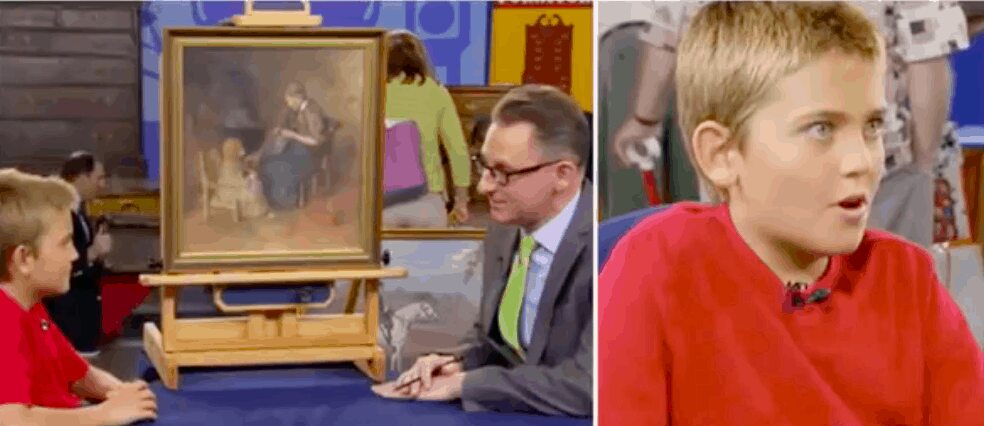
Antique Trader
Essential Part
Every appraiser understood that learning the story of each object they evaluated was an important part of their job, especially when working in front of the camera. It should also be equally evaluated and capable of identifying all of the item’s features.

Essential Part
Following The Standard Procedure
Every appraiser on the show Antique Roadshow knew they had to follow the industry’s standard procedure. On the other hand, many small appraiser shows had been airing for several years and had followed the process as well. The story they discovered in the art would make the show more appealing to viewers.
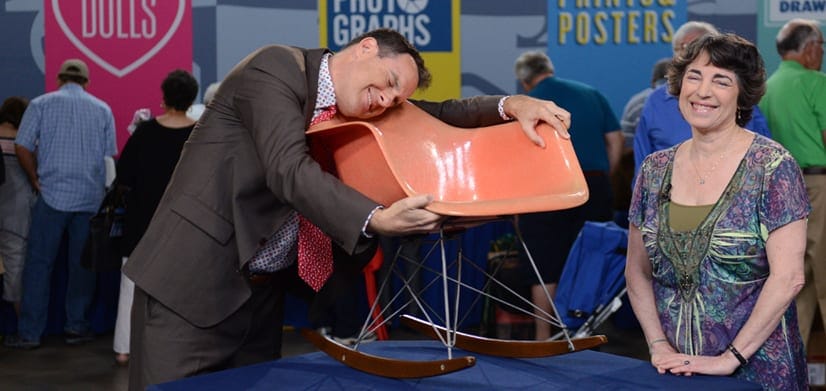
Following The Standard Procedure
Two-Dollar Painting
The young man traveled to Richmond, Virginia, to determine the value of his two-dollar painting. Those who were inexperienced with antiques would frequently seek an outside appraiser’s opinion before considering the item valuable so that they know just how much they could gain from it.
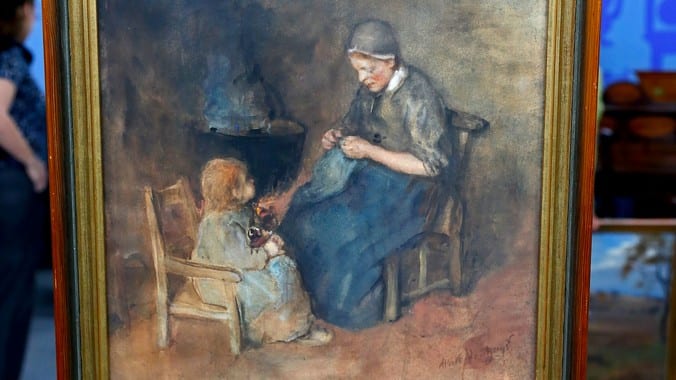
Two Dollar Painting
Worth It Or Not?
The most valuable items would end up in thrift stores or shady antique shops, where the majority of the items were not priced appropriately. The young boy in the show, on the other hand, did the same thing when he appeared on Antiques Roadshow.

Worth It Or Not?
Traveling Appraiser Docu-Series
The first episode of Antique Roadshow aired in 1979. The documentary series of a traveling appraiser and antique enthusiast who came to see them inspired the production of the show. The production became popular and influenced several other countries, including the United States.

Traveling Appraiser Docu-Series
Antique Enthusiast
When the young boy took part in the show, the painting owner realized he had been given a rare opportunity to speak about his passion and enthusiasm for antiques. Which is an opportunity that not a lot of people have!
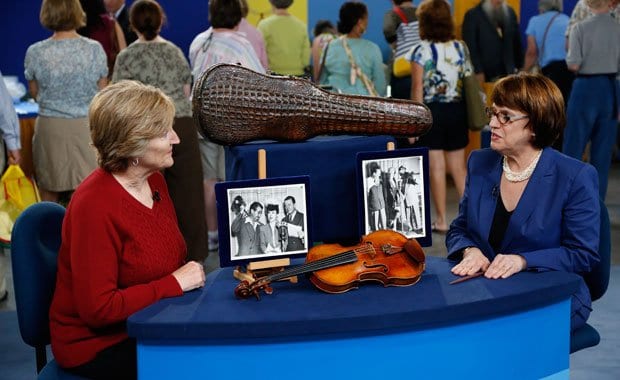
Antique Enthusiast
European Art And History
Because of his more than three decades of experience, David Weiss was known as an expert and knowledgeable in European art. His specialty was European paintings, sculptures, and paintings from the 19th and 20th centuries. There is no doubt that he really knows what he is doing.
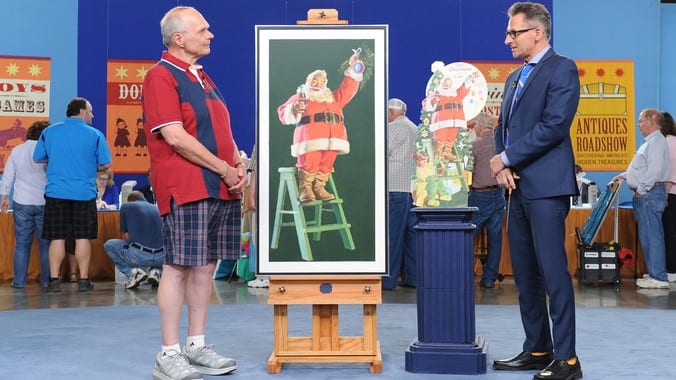
European Art And History
Skilled Man
Oriental rugs piqued his interest as well. The appraiser looked at the portrait that the young boy had brought to the show. When it came to antiques and determining the value of the canvas, he was an expert. Needless to say, he is the right man to-go-to when it comes to such topics.
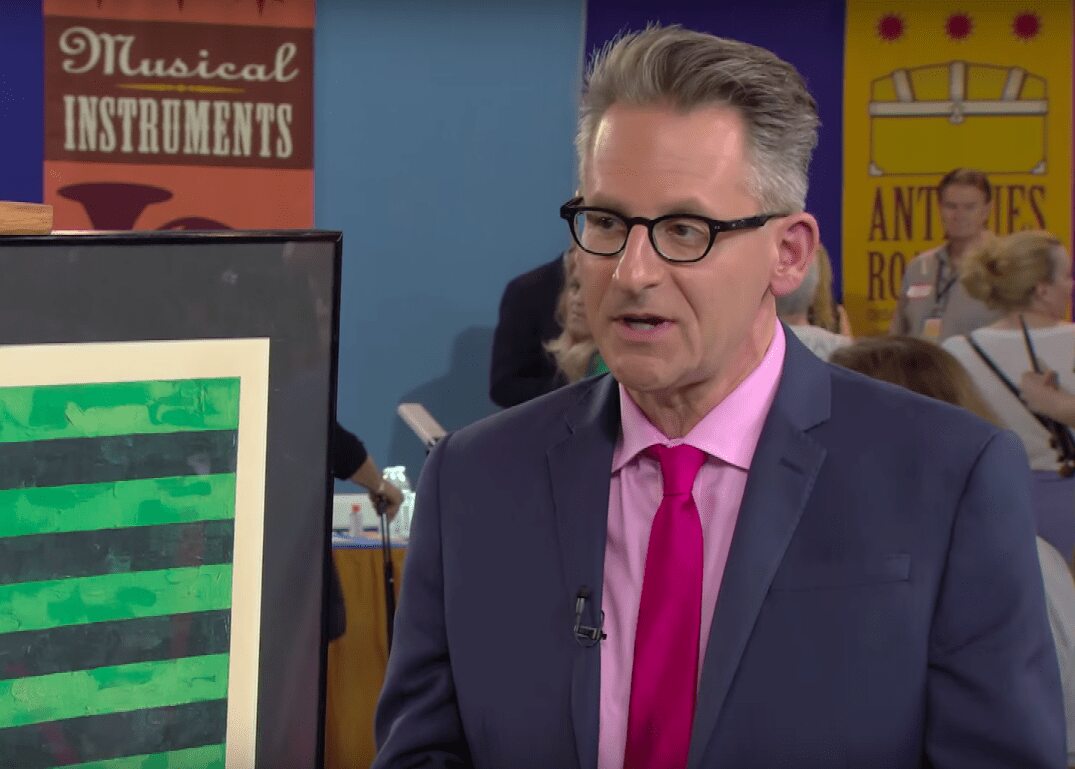
Skilled Man
SVP AT Auction House
David Weiss, like the other appraisers on Antiques Roadshow, took part in the show himself, which aided his primary job at Freeman Auction House. Senior Vice President was his title at the auction house. For all of his professional accomplishments, he deserved this position.
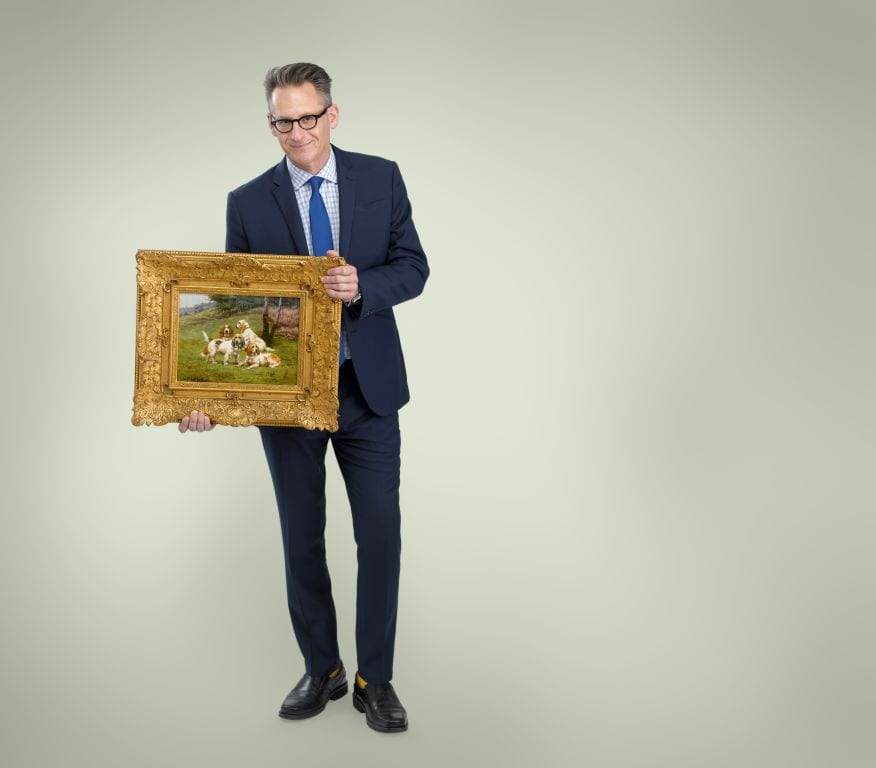
SVP AT Auction House
A Professor
He had the same title while working in Washington, D.C., and learned a lot while there. The professional appraiser, on the other hand, was not only an art appraiser but also a professor at Drexel University, where he taught business-related subjects.

A Professor
Most Rewarding Experience
When David Weiss was working in auctions, he was ecstatic when he came across a one-of-a-kind item. In his biography on the Freeman’s Auction House website, he described his experience. According to the appraiser, “For me, the most rewarding experiences as an auction house appraiser are the happy, unexpected ‘discoveries’ that originate from private collectors and estates. The best and most memorable of these ‘finds’ have resulted in massively successful prices realized.” At that point, he would always have an exciting day in the store.
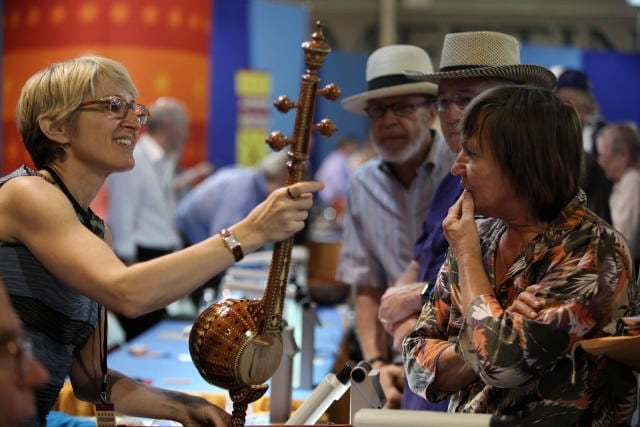
Most Rewarding Experience
Evaluating The Item
David questioned the young guest in the show, just like he did all the other guests who brought their items to be appraised by the best appraiser. He inquired about the boy’s knowledge of the painting. Let’s find out what the boy knows about the painting.

Evaluating The Item
Young Man’s Passion
The appraiser began the interview by telling the show’s youngest guest, “You must be the youngest collector that I’ve seen.” The boy showed a smile to the expert and replied, “I think so.” Weiss was taken aback by the young man’s poise and expression, particularly when it came to his passion for antique collecting.
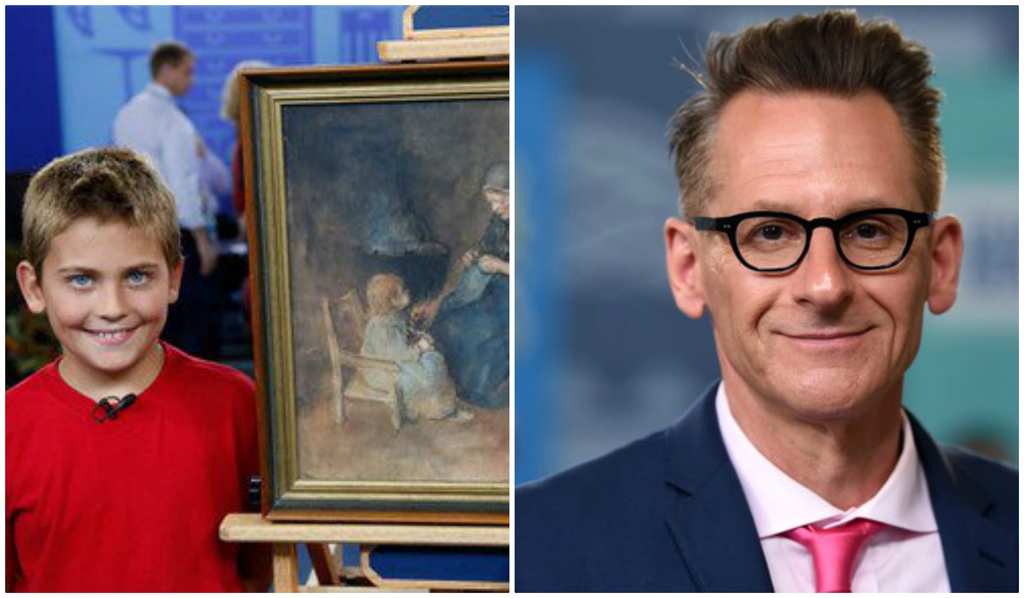
Young Man’s Passion
Convincing His Parents
It was the day the young fan first learned about the show, which aired in Richmond, Virginia, and tried to persuade his parents to let him attend. The young man believed he could get a hundred dollars for the painting he had recently purchased.
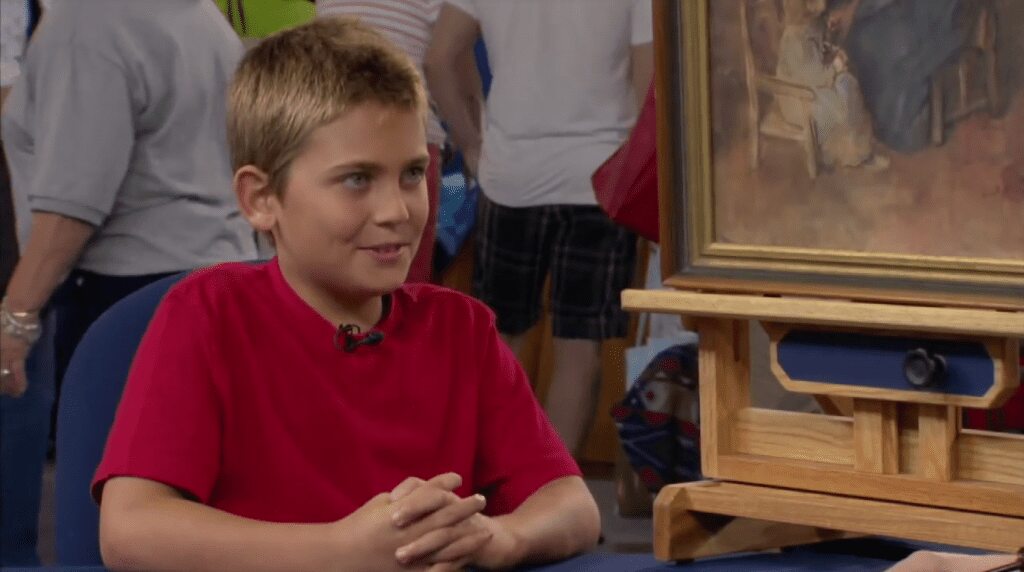
Convincing His Parents
Ultimately Agreeing
After a long drive from their home in South Jersey to Richmond, Virginia, his parents finally agreed to participate in the event. The parents supported their son on the day of the show, choosing a bright red t-shirt for the young guest to wear in front of the camera.

A Thrilling Experience
When the young guest was admitted to the event, he was overjoyed. Because of his hobby, he was given the opportunity to attend the show. Weiss was astounded to learn that the boy had purchased several antiques in addition to the painting.

His Favorite Objects To Collect
The appraiser also noticed that the young man was taking longer than he expected to gather items. He asked about the items and the youngster’s favorite object to collect during his interview with him, and his response to the professional appraiser was, “I like glass, sterling silver, and art.”
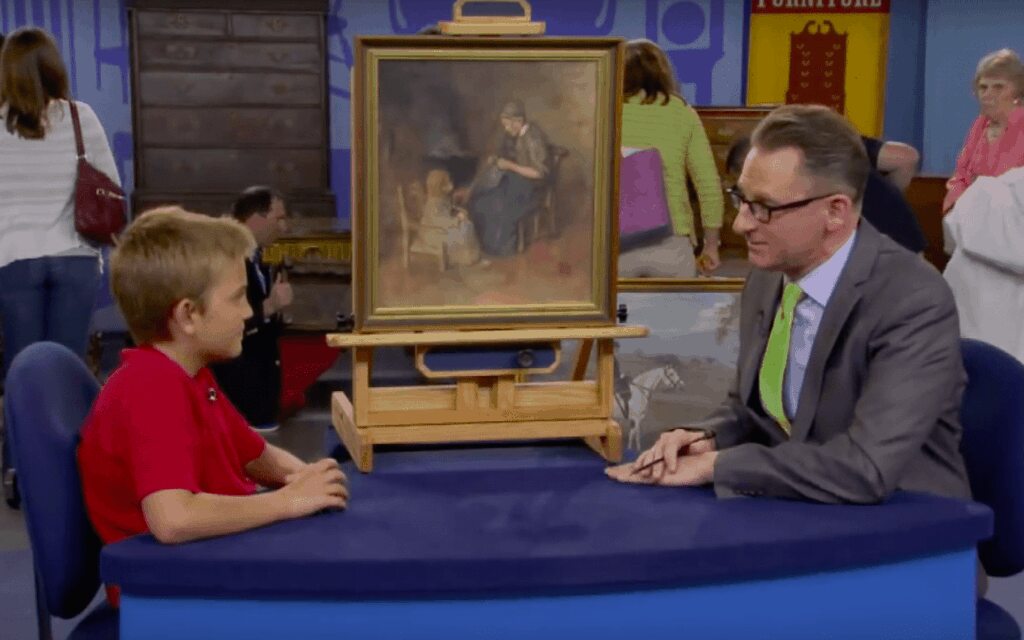
His Favorite Objects To Collect
Passion For Antiques
Weiss was intrigued by the other items the young visitor had amassed, and this piqued his interest in antiques. The appraiser was convinced by the boy’s enthusiastic response that he had a passion for collecting antiques. Which he surely was amazed by!
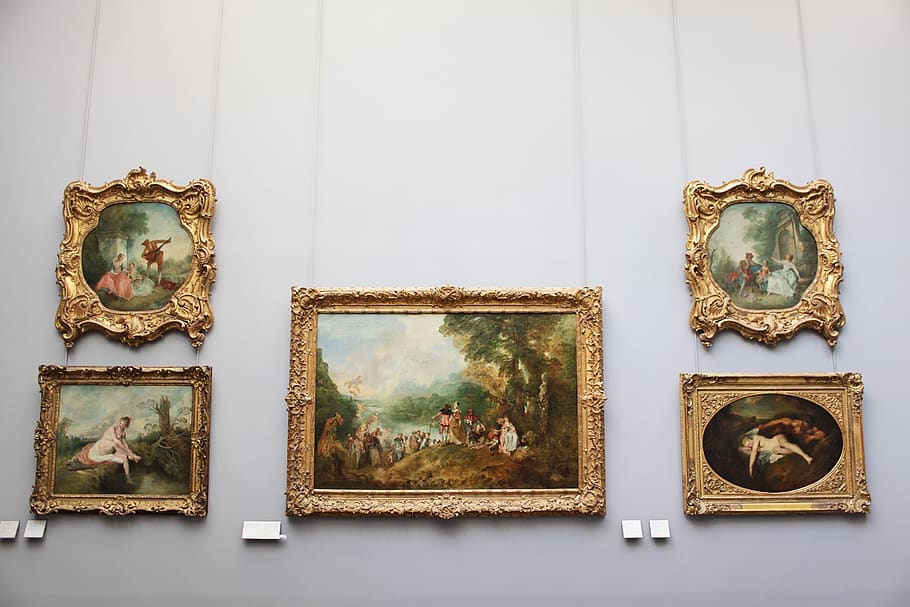
Passion For Antiques
His Most Loved Antique
The young man was still responding to the appraiser’s question, and he appeared to know his stuff. He also told the expert that his favorite antique was a large silver serving platter that he had recently discovered. The young man’s response piqued David’s interest in his passion for antiques.
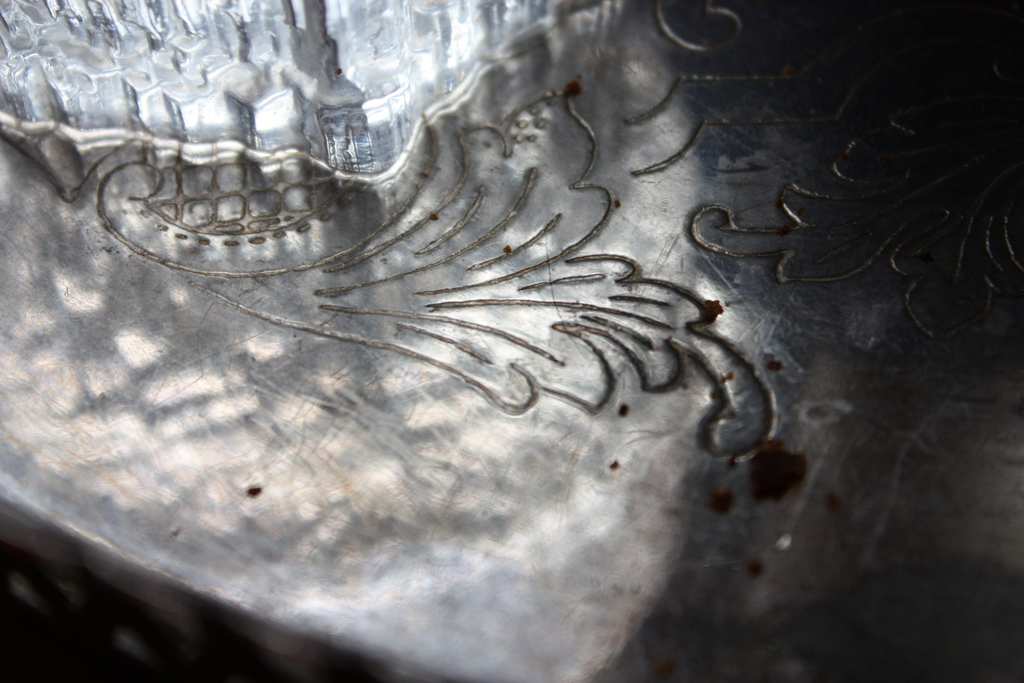
His Most Loved Antique
“Junk Auction”
David realized he needed to figure out why the young man was so interested in antiques. The appraiser inquired of the youngster, “Where do you find this stuff?” And based on the boy’s reply, it was in “a junky auction” located in the town of the young hometown in South Jersey.

Junk Auction
Different From Him
In their interview, he was astounded by the child. He assumed the young man was a collector who kept every antique he came across. However, the response he received from the guest was not what the professional expected at all.
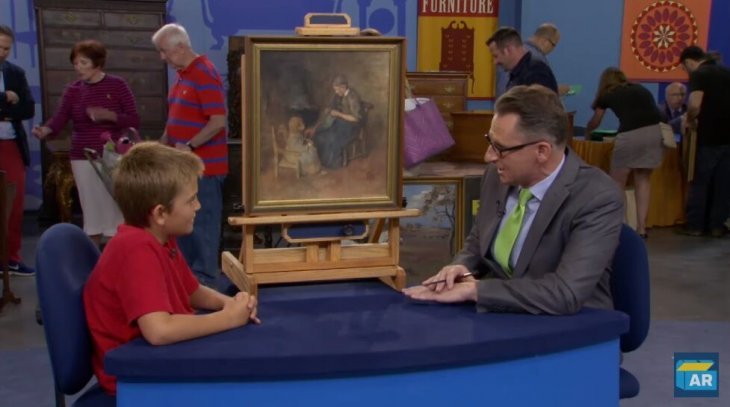
Different From Him
Keeping The Items
Weiss wanted to learn more about the young boy’s passion for antiques, so he asked if he had a habit of keeping items he found at various auctions. For most of the older antique collectors, the answer was pretty much obvious.
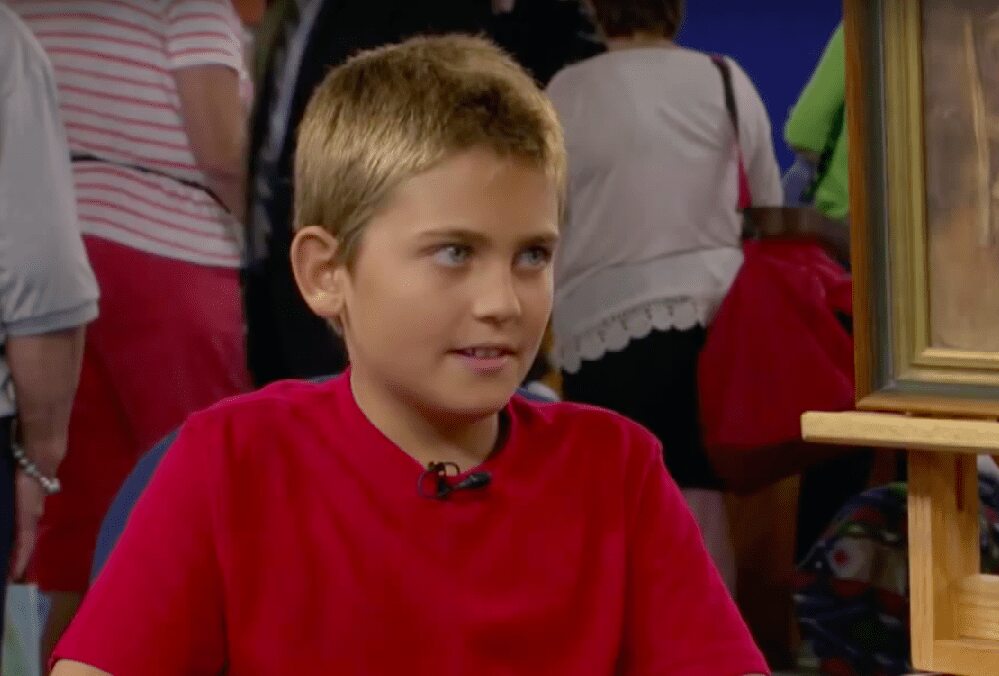
Keeping The Items
Antique Collectors
The majority of older antique collectors gathered antiques for their value rather than to keep them in their possession. Some children, on the other hand, would keep the discovered object because they believed it had significant value in their lives.

Antique Collectors
Selling Online
The boy’s experience surprised David and even the producer. Especially since the young man said, “I like to sell them online,” the appraiser did not believe the boy and asked, “You like to sell them?” The professional had not anticipated the child doing something that a grown-up would do.

Selling Online
Unforgettable Guest
He was taken aback by the young man’s ability to buy and sell each antique he gathered. The boy, according to David, was the show’s most memorable guest. Before evaluating the painting, he realized he needed to learn everything he could about the boy’s passion for antiques.
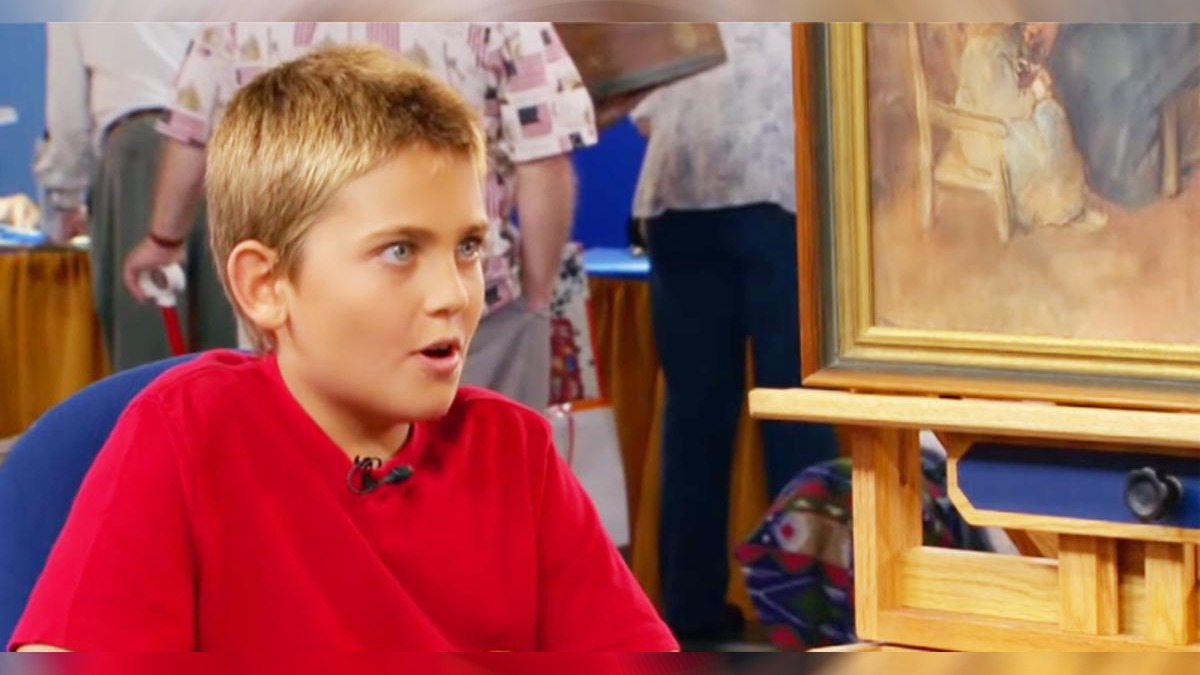
Unforgettable Guest
Business Minded
David became enthralled by the young man who sat directly in front of him. He was determined to learn more about the young man, including whether he would choose to sell or keep his belongings. The appraiser chose an item from the child’s story to appraise and stated, “Have you made a lot of money selling silver, you’d say?” They had no idea what his response would be or how the excited child would describe his experience selling the silver. The young man explained to David that he waited until September to sell the object he had discovered because they expected the market price to change.
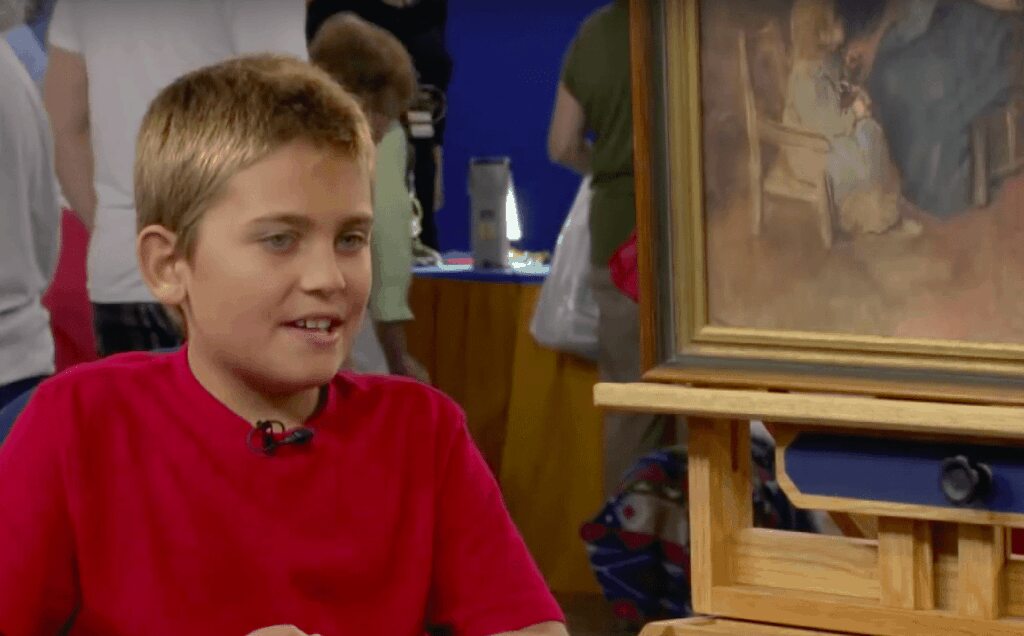
Business Minded
Gathering Information
The most intriguing part was learning how the youngster came to own a painting. The appraiser attempted to learn more about the boy’s fascination with antiques. He assumed the kid got the item at a garage sale and that the kid thought it was valuable.

Gathering Information
A Piece Of Painting
However, the show’s youngest guest insisted that during the summer, he asked his father to go to the junky auction house in their town. The child begged to be given a chance to bid on a painting later on in the place.
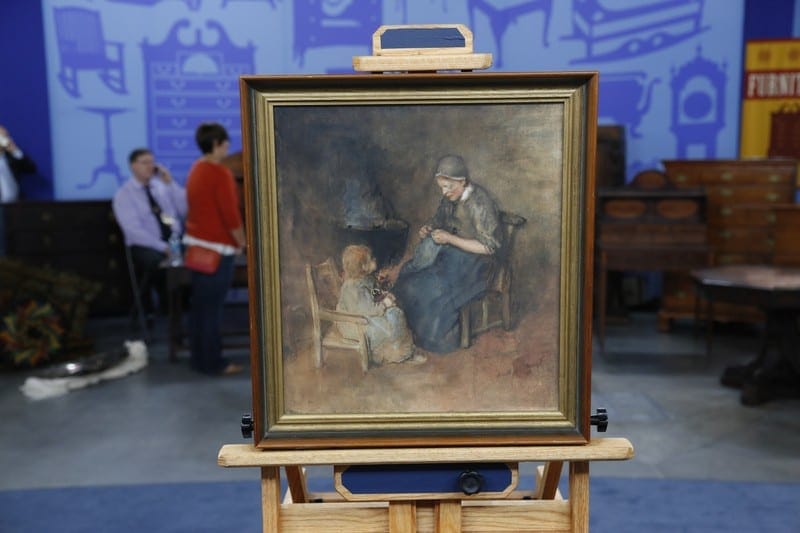
A Piece Of Painting
On The Sunny Side
This piece was discovered at a South Jersey auction. “It was so hot there, my dad didn’t wasn’t to stay to get it, but I wanted to.” the boy said in the interview. When he purchased the painting, the actual cost of the paint was only two dollars.
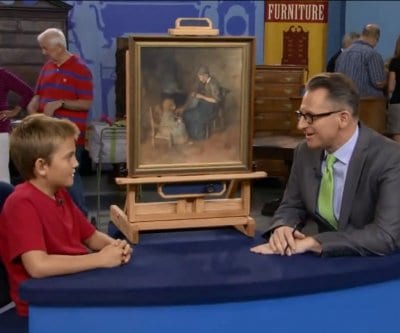
On The Sunny Side
A Significant Story
When it was created, the youngster believed it might have a significant story. The kid had a hard time figuring out where the portrait came from, which is also the reason why he wanted to go to Antiques Roadshow for this reason.

Is It Valuable?
The item that the boy brought into the show appeared to the audience and even David to be an ordinary painting. The appraiser, on the other hand, was more aware than the child that each item had a sign that indicated whether it was valuable or not.

Is It Valuable?
Mother And Child
When the professional first looked at the portrait, he noticed that it was made of standard earth tones. A mother sat in a chair, trying to reach her child, was the concept depicted on the canvas. The child, on the other hand, sat in the chair next to her mother. The owner had missed a crucial piece of information.
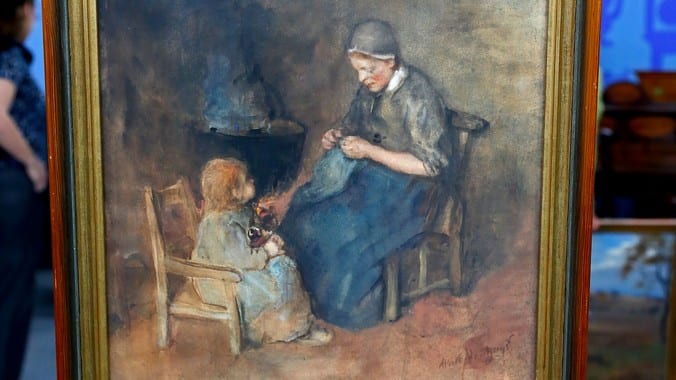
Mother And Child
Testing The Boy
David was still putting the boy to the test. He was pondering how well-versed the child was in the arts. The appraiser was taken aback by the boy’s demeanor during the interview. He believed he had brought something that a typical child would never choose.
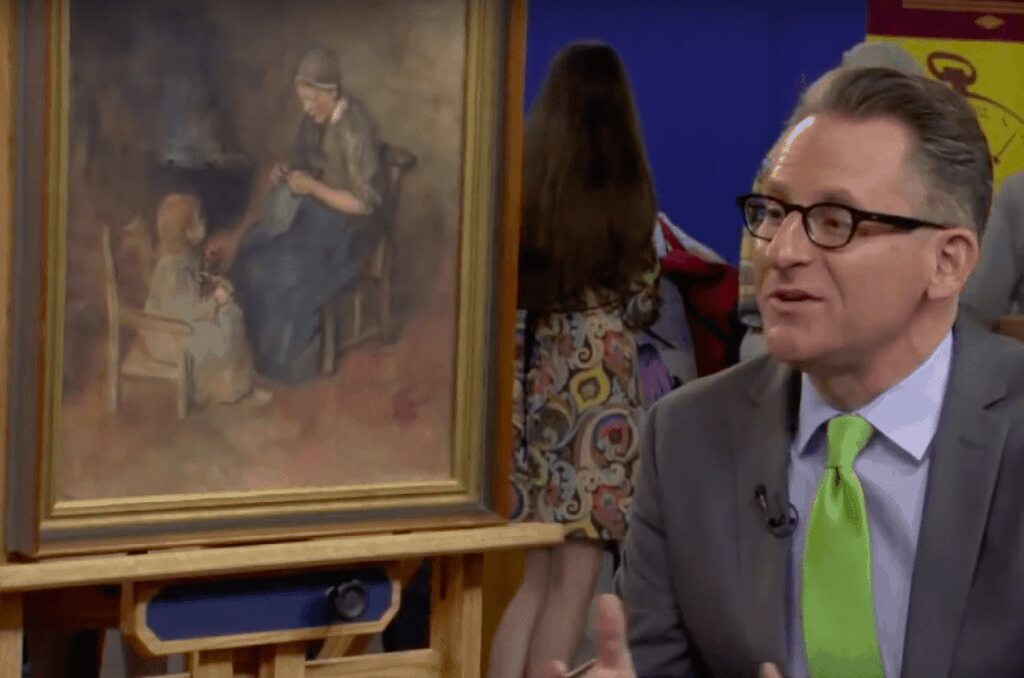
Expert In Arts
Expert In Arts
The young visitor informed the professional that he noticed the watercolor painting after he purchased it. However, because the portrait was encased in glass, the youngster struggled to explain. The art expert decided to intervene and give an explanation to the painting.

Expert In Arts
Skill In Appraising
The kid’s interpretation of the painting was correct. Watercolor was used to create the portrait. He knew a lot of things at a young age and was meticulous about the amount of silver he sold in public. He also knew how to gather a specific item.
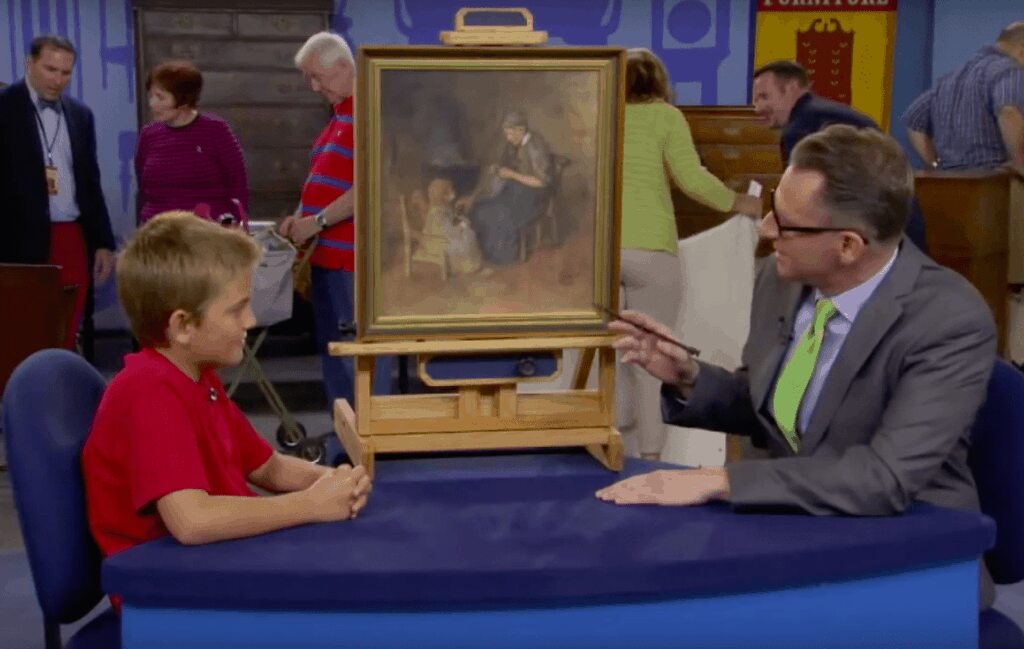
Skill In Appraising
The Only Problem
The only issue was his lack of knowledge about the value, which he was about to face when the appraiser wanted to put him to the test. Weiss checked to see if the young visitor had honed his appraisal skills.

The Only Problem
Improve The Child’s Talent
When the boy finally met and made a quick assessment, he noticed a sign on the bottom of the work of art. He could only describe a portion of the name, but the second half of the signature’s description was clear to Weiss. It was almost as if he recognized the signature right away. Rather than telling the child the value right away, he wanted to improve his ability to appraise. The professional asked the young visitor to repeat what he had just said.

Improve The Child’s Talent
Real Passion
It was getting close to the time when they would evaluate the child’s painting. David expressed an interest in discussing his portrait. He’d like the boy to explain everything he saw in the painting and tell him about it. David realized the young visitor’s enthusiasm for the arts was genuine, and he believed he had a good chance of becoming an appraiser when he grew up.

Real Passion
Albert Neuhuys’ Painting
Every detail of the signature had been expertly described by the young man. The first name, however, was the only thing he could explain. At that point, Weiss revealed the signatory’s surname. Albert Neuhuys was the name of the artist who created the painting.
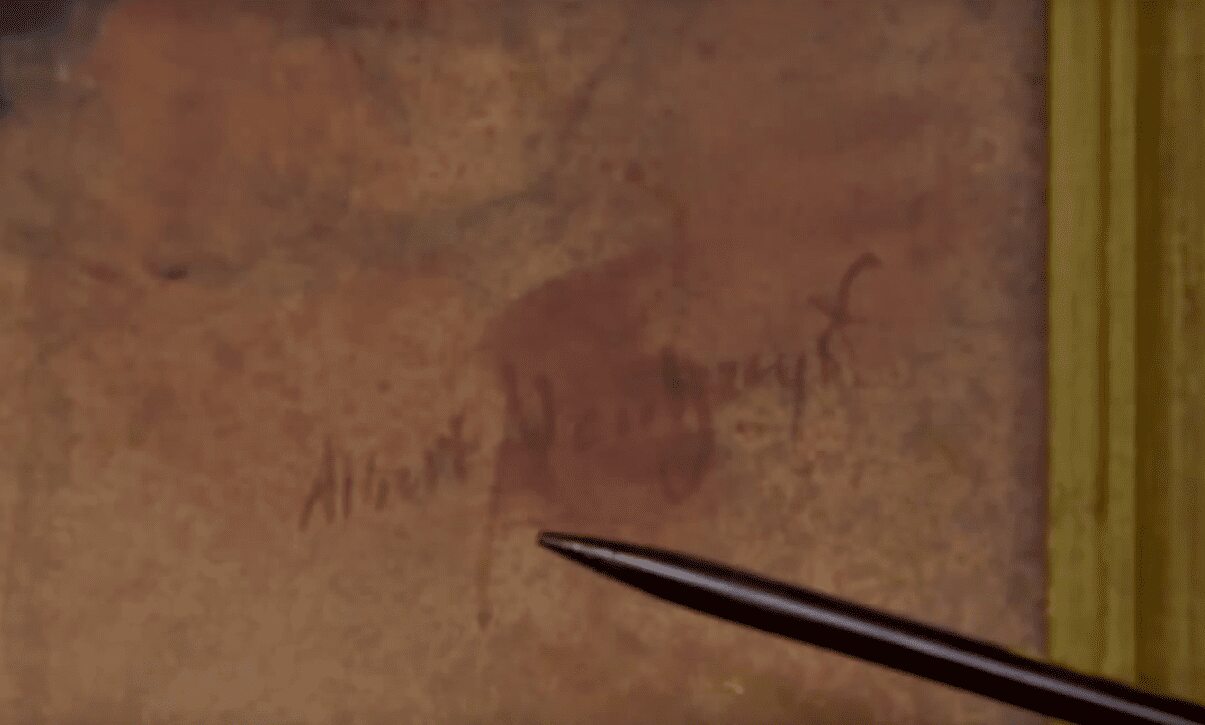
Albert Neuhuys’ Painting
19th Century Painter
Albert was a great painter in the Netherlands during the era of the 19th century. According to the appraiser, Albert and other painters of the time created a live set at home. The painting the child purchased, which depicted a mother and child, is an example. The artist who created the painting was a Laren School student. He studied with various painters, including Jozef Israels, in a Dutch artist colony. Albert was transferred from a rural to an urban environment. He began to create art with zeal after relocating to a new location.
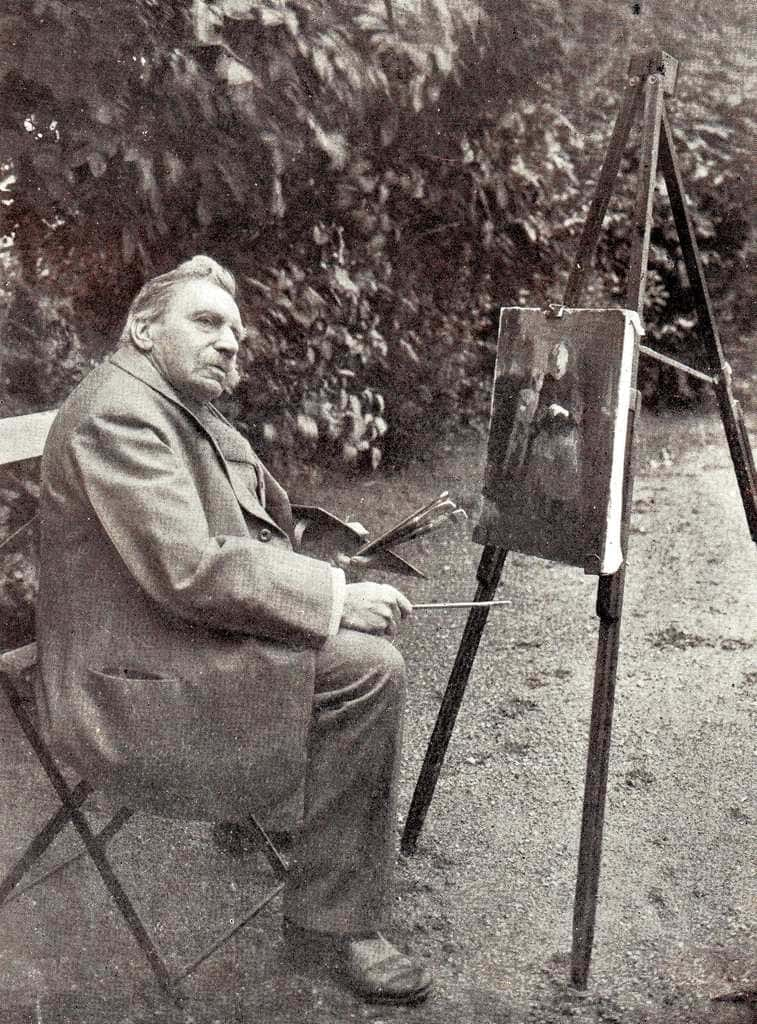
19th Century Painter
Era Of Peaceful Painting
During Albert’s lifetime, a serene painting gained a reputation in the era. His source of income was the painting. The majority of his paintings depicted scenes from people’s daily lives inside their homes. The painting that the child had brought to the Antiques Roadshow was an example of his work. The lovely illustration depicts a mother sewing while her child looks at what she’s doing.
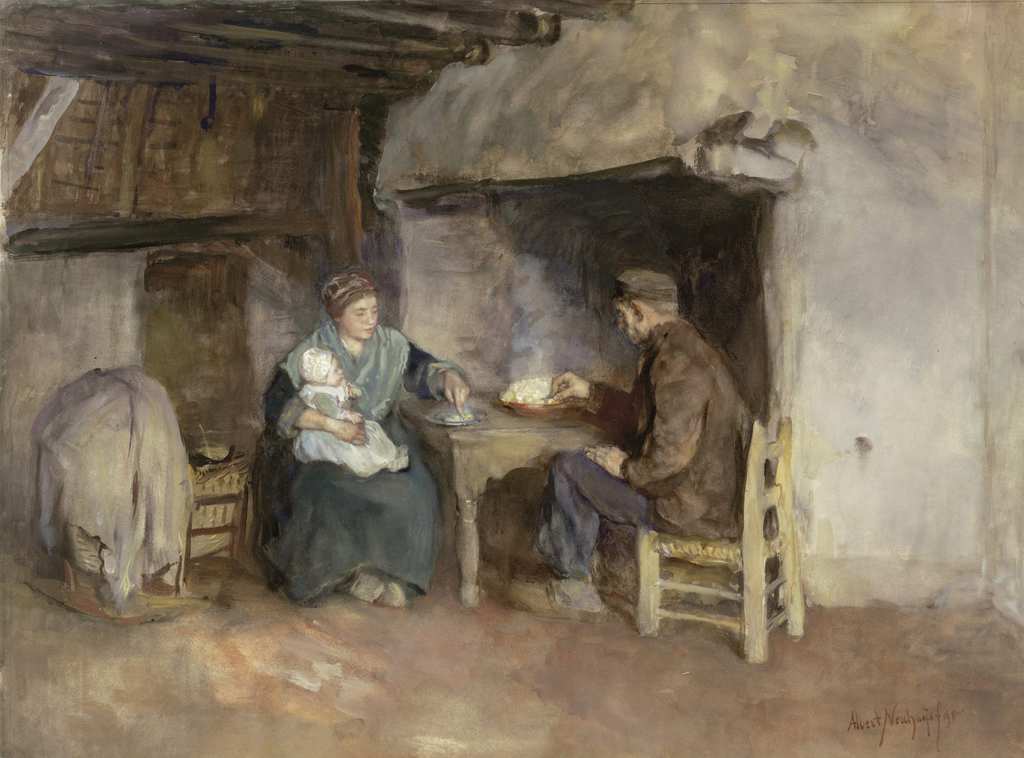
Era Of Peaceful Painting
Domestic Tasks
He also depicted domestic tasks in rural life as if the farmers were going about their business. The majority of his work was displayed in some of the world’s most prestigious art museums. The boy, on the other hand, was the proud owner of one of the painter’s works.

Domestic Tasks
One Of The Dutch Painters
David knew more about the painting than the boy did. When the youngster tried to appraise, it was the most important thing. Before continuing his evaluation, he talked about Neuhuys’ life and creation. According to him, “Neuhuys was one of the Dutch painters. He was born in 1844, and he died in 1914. I think your watercolor was probably done in the last quarter of the 19th century.” The boy had been wondering how old the painting was before Weiss’s revelation, but it was clear to the expert that the boy was soaking up every word.
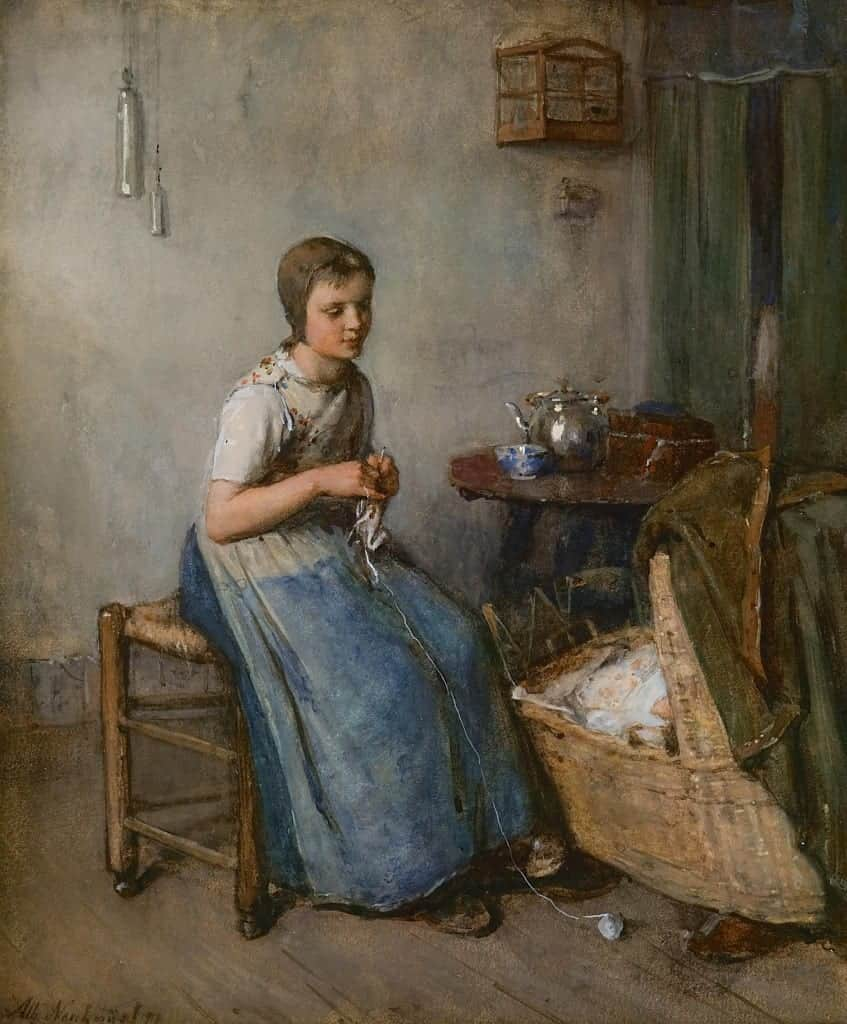
One Of The Dutch Painters
The Guessing Game
On the Antiques Roadshow, experts in antiques let their guests try to estimate the value of their items. However, they would not be surprised if their guess was higher than the item’s true value. It was for this reason that they traveled to different places. It didn’t rule out the possibility of them going into a store. On the other hand, the expert explained the history of the painting and said that this time he would try to make the boy guess how valuable it was. It was the method he used to teach the child about the antique’s worth.
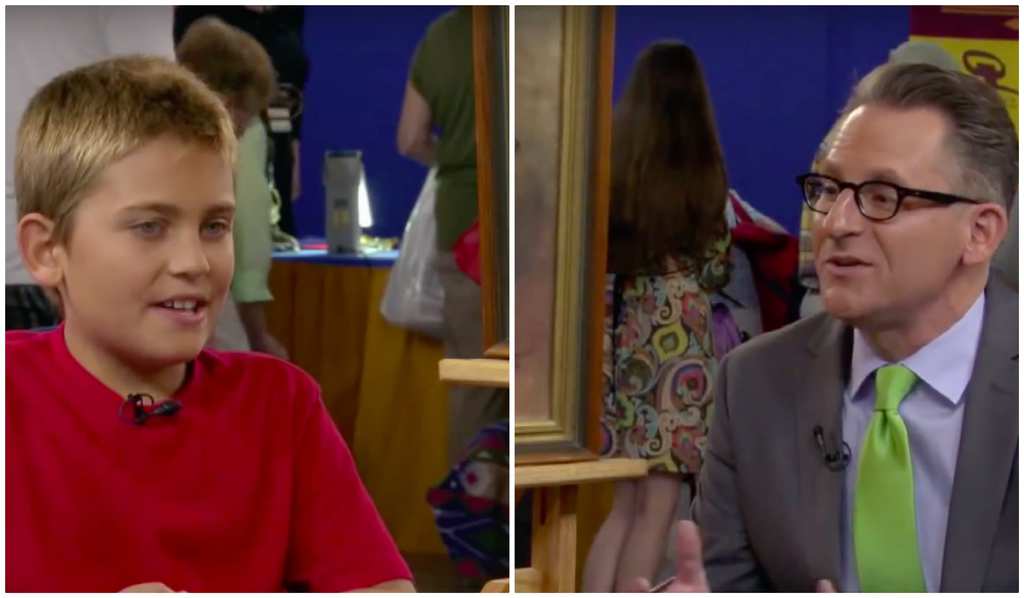
The Guessing Game
What’s The Real Worth?
David asked the child, “How much do you think is worth?” It was time for the appraiser to evaluate his item. He put the young guest in every trial to see how knowledgeable he was about antiques. The young man deserved it when he guessed the item’s total amount after a long hour of waiting in the hot summer season to get the painting and travel from New Jersey to Virginia. His greatest guess was “Hundred and fifty bucks.”
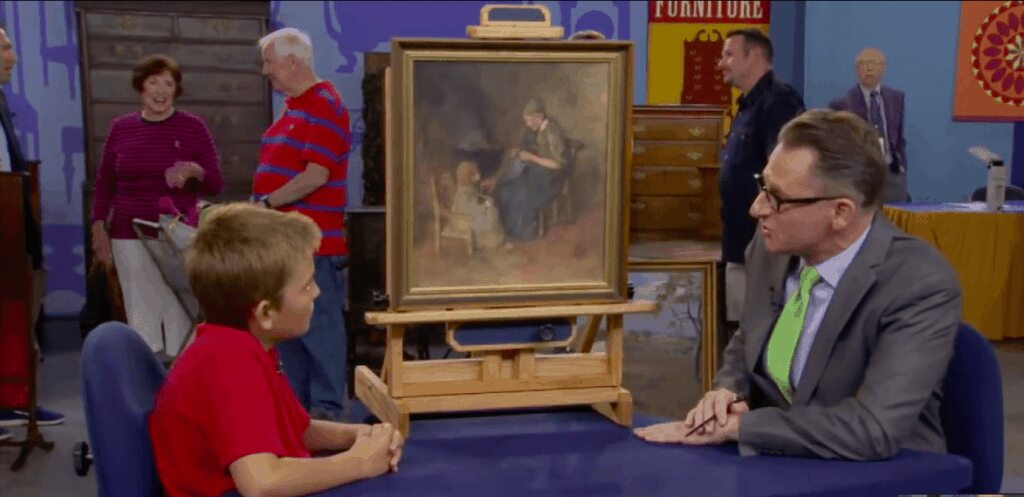
What’s The Real Worth
A Hundred And Fifty Short
David repeated the boy’s guess, “Hundred fifty bucks?” However, he suddenly added, “I think it’s worth a hundred and fifty. I think it’s worth more than one hundred and fifty.” The youngster’s enthusiasm remained unchanged. He delegated the evaluation of his item to the appraiser. When the expert changed his words with controlled breathing, everyone became enthralled. Later on, he said that “Today, if your Alber Neuhuys watercolor came to an auction. It would probably sell for about $1000 to $1500.” When the professional antiques said the word “thousand,” the young guest couldn’t believe his ears.
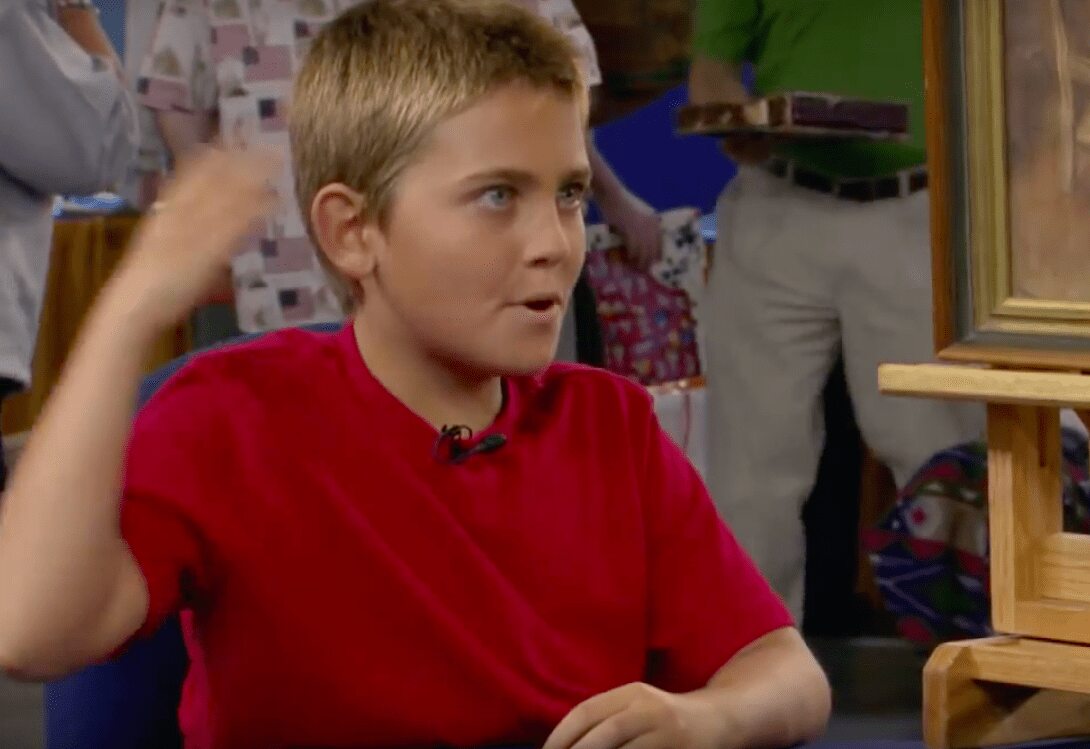
A Hundred And Fifty Short
That’s A Lot Of Money
The boy could only say “Woah,” which was his reaction to the total value of his painting. When Weiss mentioned the cost of his discovery, he blew his mind. The appraiser thought the youngster possessed a natural aptitude for trading art. Before he could become a better appraiser, he needed to learn and understand a lot of things. He told the painting’s owner, “That’s a lot of money!” From a two-dollar painting to a thousand-dollar cash prize. David, on the other hand, threw in a quick lesson for the show’s youngest visitor.
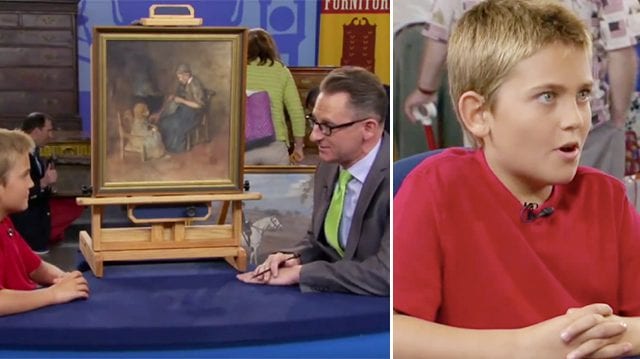
That’s A Lot Of Money
A Big Future
The boy was the youngest guest the show ever had. David Weiss explained to the young guest that he had a real talent for art and that he should definitely continue to use it in the future. David was sure that the boy had a bright future ahead of him and that maybe one day he would be a reviewer on the show himself.

A Big Future
Not The Only One
This boy got a ton of money from his painting, which only cost him $ 2. But he wasn’t the only kid making money from vintage items. Now we regret that we didn’t keep so many things from our childhood. You may now want to check out your old toys and see if you can even find your old toys. In the following we present you the 25 most valuable toys from your childhood.

Not The Only One
Garbage Pail Kids’ Cards: Over $1,000 US Dollar
Many may still remember it from the 80s. In the similarly surreal Internet, where a card like “Adam Bomb” can fetch around 3,000 US dollars, the surreal trading cards from Garbage Pail Kids have found their perfect home. If they’re in their original box, bonus dollars. If you were a kid or teenager in the 1980s, you probably loved Garbage Pail Kids cards. Like the Mars Attacks cards Topps released in the 1960s, the Garbage Pail Kids line of products was received with equal disgust by outraged parents.

Garbage Pail Kids’ Cards: Over $1,000 US Dollar
1978 Luke Skywalker Actionfigure: 25.000 US-Dollar
When Japanese designer and creator of A Bathing Ape, Nigo, wanted to unload his Star Wars sets, he turned to Sotheby’s. The total value of the 2015 auction was over half a million dollars, including this brand new boxing figure from Luke Skywalker, one of only 20 on the market. In one action, a bidder paid $ 25,000 for a 1978 Luke Skywalker action figure. This is considered very rare because the lightsaber was easily broken and the toys were taken out of production. The figure was also still in the original packaging.

1978 Luke Skywalker Actionfigure: 25.000 US-Dollar
Peanut Royal Blue Elephant Beanie Baby: $7,000
When Ty Warner began creating beanie babies in his suburban Chicago apartment in the mid-1990s, he was on the right track. The veteran toy seller knew he could make money and create something rare. He only sold a limited number of the first Beanie Babies and quickly retired them. A group of soccer mothers from the Chicago area quickly got the idea that investing $ 5 would result in hundreds, if not thousands, of dollars in profits. The Beanie Baby Peanut the Elephant is worth $ 7,000.

Peanut Royal Blue Elephant Beanie Baby: $7,000
PEZ Dispensers: Prices vary
Sugar Fiends will be happy to know that even this rusty, candy-free PEZ dispenser could one day be worth something. A dispenser known as Astronaut B, developed for the 1982 World’s Fair, became a major bank in 2006 and sold on eBay for $ 32,000. The Mickey Mouse soft head dispenser, the Santa Claus head dispenser from 1955 and the PEZ pistol are among other things collector dispensers.

PEZ Dispensers: Prices vary
The Original Monopoly Game: $146,500
Monopoly’s original 1933 hand-drawn oilcloth version, owned by game inventor Charles Darrow, sold for $ 146,500 on Sotheby’s auction house in 2011, nearly double its estimated price. But even if you don’t have such a rare version of this popular game, the retro 1930s copies sell for $ 3,125 and the limited editions on eBay sell for hundreds.

The Original Monopoly Game: $146,500
Hot Wheels: Prices vary
While most of these palm-sized cars cost only a few dollars, thousands of rare discoveries can be worthwhile. The “Volkswagen Beach Bomb” prototype from 1969, built with surfboards on the rear window and wheels that made it too big for Mattel racetracks, is one of the most valuable. While it’s never been widely used, it’s even more valuable to collectors who value it at around $ 125,000.

Hot Wheels: Prices vary
Action Comics Nr. 1, $3.2 Million
This “flawless” version from 1938 went up for sale in 2014 as the most expensive comic ever to be sold on eBay. Hey why the frenzy? This is the comic that first brought Superman into the world, and there are fewer than 50 of them in the world. By far the highest price ever paid for a single comic book, the figure rose above the $ 2,161,000 paid for a less pristine copy that was auctioned in 2011.

Action Comics Nr. 1, $3.2 Million
Wun-Dar He-Man: Prices vary
Man, this muscular action figure, also known as He-naked with a loincloth, was a giveaway that came with your Wonder Bread purchase in the 1990s. If you’ve got it, you are lucky: your love for white bread could be paying off thanks to eBay, where some of these cost up to $ 500. The description on eBay is as follows: “The legendary Savage He-Man, the original savage of the goddess and protector of the sword of He, was sculpted in incredible detail by the four horsemen and is fully articulated.”

Wun-Dar He-Man: Prices vary
Fisher Price’s Push Cart Pete: $3,000
If they’re like new, you can make a mint using antique Fisher Price toys. This 1936 9-inch pull toy is expected to be worth up to $ 3,000, which isn’t bad considering it originally retailed for 50 cents. We are always amazed about it.

Fisher Price’s Push Cart Pete: $3,000
American Girl “Molly” Doll: $11,000
You’re being run by a new $ 120 American Girl Doll, but isn’t it comforting to know that obsolete dolls like Felicity, Samantha, Kirsten, and Molly live somewhere? You could make up to $ 11,000 if you have one of these out-of-print dolls at home with their original clothes and accessories. Molly’s outfit reflects the need for versatility in one’s wardrobe during World War II, when clothing restrictions existed and outfits necessarily required more versatility than before and had to be combined more than in previous eras.

American Girl “Molly” Doll: $11,000
First Edition Of “Where the Wild Things Are”: $25,000
In 2012, the first edition of Maurice Sendak’s classic children’s book, signed in 1963, sold for $ 25,000 on Abebooks.com. The condition of the book was particularly impressive, as picture books seldom survive without cracks, stains, and smears, as parents know all too well. This 338 word story centers on a boy named Max who, after putting on his wolf costume, wreaks so much havoc in his household that he is sent to bed with no dinner.

First Edition Of “Where the Wild Things Are”: $25,000
Lionels Pennsylvania ‘Trail Blazer ” trainset: Prices Vary
Lionel’s nostalgic electric train sets are reminiscent of a bygone era (and are now made with 21st-century technology), but it can be worth hundreds of dollars if you happen to find an original Lionel set in your attic. So it is definitely worth taking a look into your old children’s room to see if there is a “Trail Blazer” there.

Lionels Pennsylvania ‘Trail Blazer ” trainset: Pices Vary
First Edition Barbie: $23,000
The first Barbie doll was released in 1959 and features gold hair, a black and white swimsuit, and blue eyeshadow. While this rare barbie has an estimated value of $ 8,000, a mint-condition doll sold for $ 27,450. According to The Richest, you can tell if your model is a first edition model by looking for holes in the bottom of their feet – the second edition had fixed feet.

First Edition Barbie: $23,000
Vintage Atari Catridges: Prices vary
An urban legend that Atari buried hundreds of its wild cartridges in the New Mexico desert in 1983 turned out to be real in a truth stranger than fiction. A total of 881 reclaimed cartridges were sold for $ 107,000 in sales. On eBay, the rarer and most popular games cost hundreds of dollars. It was the first successful home video game console. Thousands of games have been published on the Atari 2600 during its life cycle. Some of them were good and some were terrible.

Vintage Atari Catridges: Prices vary
Original Furby: $900
In 1998, these furry, interactive toys landed on the stage. If you stick to an early prototype in an unopened box, you can expect around $ 900 to be raised. Of course, your Furby is worth tons more if it’s in pristine condition – aka still in the box – which could be a deal-breaker since they are literally meant to be played with.

Original Furby
Game Boy: $750 – $1,000
We spent hours with Nintendo’s mobile gaming system, which was first launched in the United States in 1989. All of this was before we all got addicted to our cell phones. These days, Game Boys can be bought in mint condition and can be for hundreds and if you have a limited edition like the Game Boy Light, over $ 1,000. The screen was tiny, the graphics limited to grayscale on a matte green background, but the Nintendo Game Boy was a revolution.

Game Boy: $750 – $1,000
Original Transformers Action Figures: Prices vary
In 1984, Hasbro released the first line of these transforming robotic action figures. If you’ve been lucky enough to keep the originals in their packaging, they may even be worth more than their original value: Optimus Prime figurines sell on eBay for flawless packaging starting at $ 1,000, much more than the original sticker price.

Original Transformers Action Figures: Prices vary
First Edition Of “Harry Potter and the Philosopher’s Stone”: 6.500 US-Dollar
First copies of the US version by J.K. Rowlings story that started the Harry Potter phenomenon was originally published in 1998 and retails for up to $ 6,500. Get a Gryffindor score if you can find a signed copy that adds value, e.g. B. this one that sells for $ 15,000. The first novel in the Harry Potter franchise, and Rowling’s debut novel, follows Harry Potter, a young wizard who discovered his magical legacy on his eleventh birthday when he received a letter of admission to the Hogwarts School of Witchcraft and Wizardry.

First Edition Of “Harry Potter and the Philosopher’s Stone”: 6.500 US-Dollar
Mario Kart 64: $400+
One of the most popular Nintendo games (we all wanted to be Yoshi) is now selling for around $ 460 to $ 675. A game that is worth a lot of money and taught us to drive? Not too shabby. The first part of the series, Super Mario Kart, was launched on the Super Nintendo Entertainment System in 1992 with great success. With six Mario Kart games released on home consoles, three on portable handheld consoles, four arcade games developed in collaboration with Namco, and one for mobile phones, the Mario Kart series has a total of fourteen entries.

Mario Kart 64: $400+
